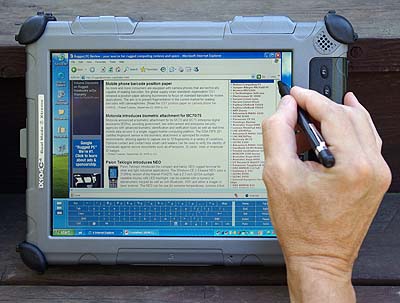Who could have imagined even just ten years ago how much our world would change? Even three years ago was an entirely different reality.
The Greenland Ice-Sheet Breakup and Melt
While the scientific community and a handful of eco-activist types warned it would happen, the vast majority of earth’s human population never anticipated the rate with which ocean levels would rise once the Greenland Ice-Sheet broke off, broke up, and began to melt in late 2013 and early 2014. The 1.5 meters worldwide ocean levels rose in the first months of 2014 caused worldwide panic and havoc, and more than a few doomsday prophets. The crisis grew as the icebergs began to melt, raising ocean levels an additional 2.5 meters by the close of 2014.
In human terms, 2014 marked the year that nearly all of Amsterdam, Venice, Tripoli, Dakar, and Hong Kong; most of Caracas, Miami, Atlantic City & Barcelona; and portions of Beirut, Taipei and San Francisco became uninhabitable. 2014 was the beginning of a worldwide migration of more than 20 million. Governments around the world that were able to avoid declarations of martial law were nonetheless convulsed to the core.
2015 saw 2 more dreaded meters added to the greedy sea, and the subsequent fall of Rotterdam, Pisa, Odessa, Lagos, Cape Town, Dar Es Salaam, Cape Coral, St. Petersburg, representative government in Greece, Italy, and South Africa, and the two party system in the U.S.
Spring of 2016 gave 2.5 more meters, and took Mumbai, Ho Chi Minh City, Shanghai, Vancouver, and Buenos Aires, Fort Lauderdale, and 60 percent of the islands of Micronesia.
By the close of 2016, ocean levels were 7 meters higher than they were just three years earlier. What has come to be called the ‘highland migration;’ the insanely rapid movement of more than 93 million refugees worldwide in less than 1000 days has undoubtedly been the defining event not only of our time.
While corporate lawyers tried in vain to portray the loss of the Greenland Ice-Sheet as an unpredictable act of an angry God, the newly-formed Global Green Party gave voice to an enraged public, who overwhelmingly understood the loss to be directly linked to global warming and corresponding activities of corporate and institutional greed and waste. The backlash against institutions seen as ‘corporate polluters’ was violent and swift; with automakers and energy producers feeling the brunt of the vigilante ‘OVeR’ (Overdue Verdant Reply) attacks carried out by disturbingly sophisticated zealots.

The Green party in the U.S. needed to control it’s violently radicalized members, or risk loosing it’s ascendency to one of the former great parties, the Democrats or Republicans, which continued to cull a few members from the tatters of their once strong base. A concerned and competent core of local and national leaders came to the fore, and reasserted rule of law, cut off the rabid vigilantes among their ranks, and consolidated power as a tough, no-nonsense party dedicated to the social welfare of all Americans and to environmentally restorative principals.
Even as societies and governments convulsed, neo-luddite tendencies were quelled in the vast majority of the population with the realization that while industrial technologies in the service of limitless capitalist greed caused the calamity in the first place; other technologies: networked, engineering, educational, and medical technologies were both a lifeline to millions, and the tenuous, tenacious threads upon which civil society precariously rested.
Lincoln-Saywire Virtual Middle School
By 20th century standards our class of 120 would be enormous, but we’re fortunate to have two teachers for it. Lincoln-Saywire Virtual Middle School allows our students to login to class from any location at any time, which serves our dense and shifting population well. The online distribution and collection of assignments, together with grading algorithms are invaluable for managing workload, but the mandatory civil reconstruction corps apprenticeships (CiRCA) written into federal law last year go a long way to provide mentoring in the trades and plastic arts, while instilling a sense of civic duty and common purpose altogether absent from the youth of even just 6 or 7 years ago.
The OLPAC Mark III
When OLPC (One Laptop Per Child) formed it’s OLPAC (One Laptop Per American Child) branch with federal support, all American children were promised to be equipped with simple, solar/handcrank laptops. They’ve begun to make good on their promise, but the backlog and need is enormous. Here at Lincoln-Saywire we’re fortunate enough to be fully stocked, with each of our 4,500 students in possession of an OLPAC Mark III tablet. It’s significantly less feature rich than the laptops of even just 5 years ago, but the reduction of bleeding edge features has allowed for the price point to fall below $40. And the basics it does provide, it does well, namely:
- Integrated speakers, webcam, mic & speakers
- Access to the GoogleSuite of business and creative tools (enabling word processing, database creation, spreadsheet production, multimedia presentations, image, audio and video capture and processing, and networked communications)
The Mark III is built to take abuse, and has a drop-rating of an amazing 20 feet. Innovation is not the hallmark of the Mark III, but durability and sustainability certainly is. In fact, it’s the first C2C (cradle to cradle) computer of it’s time; eschewing planned obsolescence, and designed to last 100 years.
Of course, none of this would matter without the internet, which has made it through these years of rapid change, and in fact, whose decentralized model has inspired other design projects of the Highland Migration. CiRCA continues to reinforce IT infrastructure with it’s project to convert rural U.S. post-offices to Wi Fi Max base stations, which is invaluable for connectivity saturation. In fact, it’s the ubiquitous availability of internet connectivity that permits virtual schools like ours to exist, with in the field learning occurring anywhere the student happens to be. As brick and mortar classrooms literally and figuratively disintegrated, virtual schools like ours have formed to address the changed realities of our time.
At Lincoln-Saywire we are proud to be a part of the growing Media Literacy movement, and expect our students to graduate with a comprehensive understanding not only of traditional language arts, but also visual and moving image literacy, interpretation, and development, and historical and contemporary methods of cross marketing and youth marketing. Students especially like using the media equipment – the mics, video and still cameras in their Mark III tablets to compose their work and responses. Our ‘citizen journalism’ class is a particularly proud curricular achievement.
All in all, it’s been a rough 7 years. Rough on all of us. And it’s likely to stay rough for the foreseeable future – certainly for our lifetimes. But it hasn’t been the end of the world, or even the end of civilization, although it has looked and felt like it at times. Our role as educators is more important than ever before, in sustaining and growing young minds and keeping the kindled flame of hope alive.
References:










